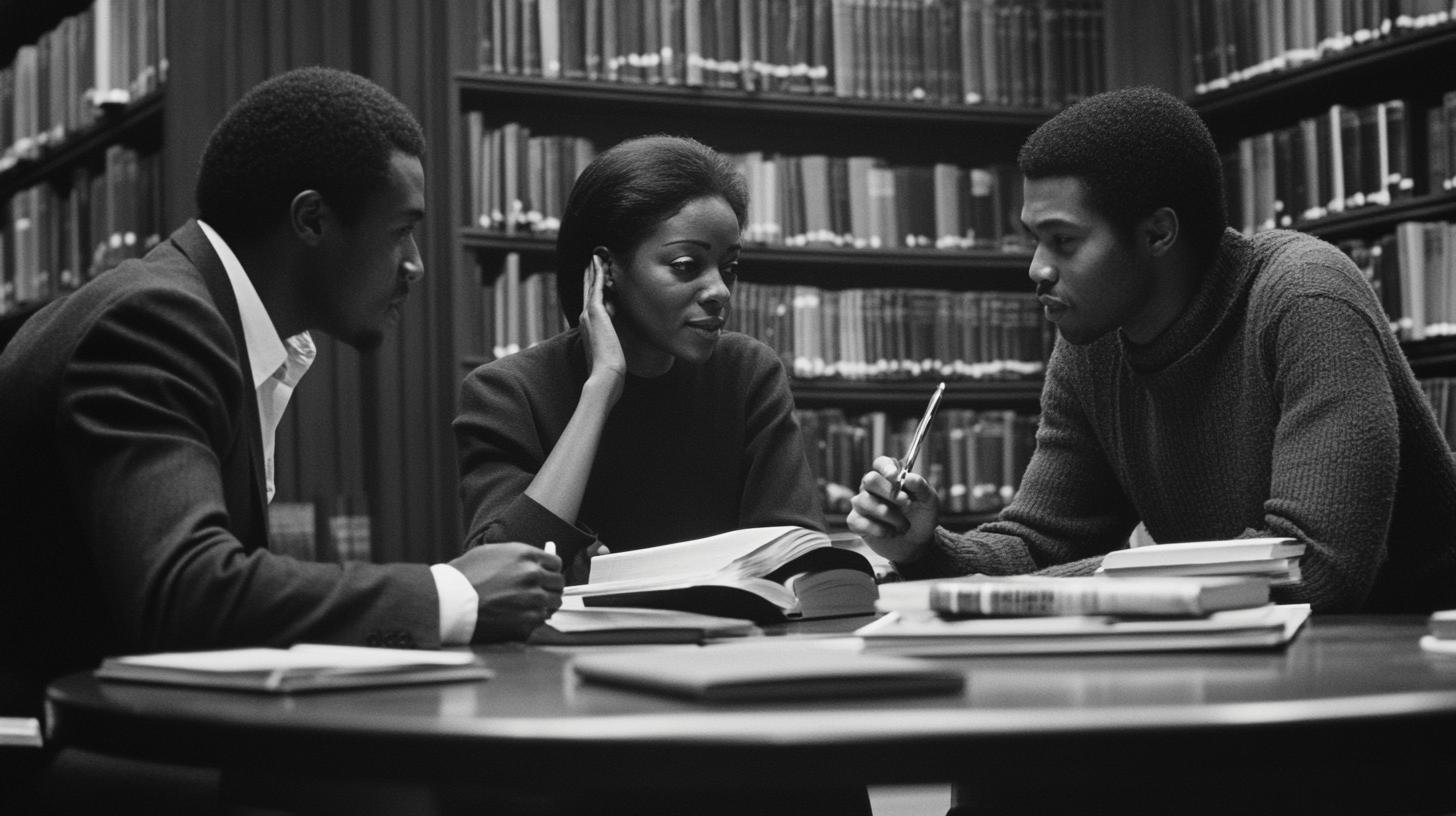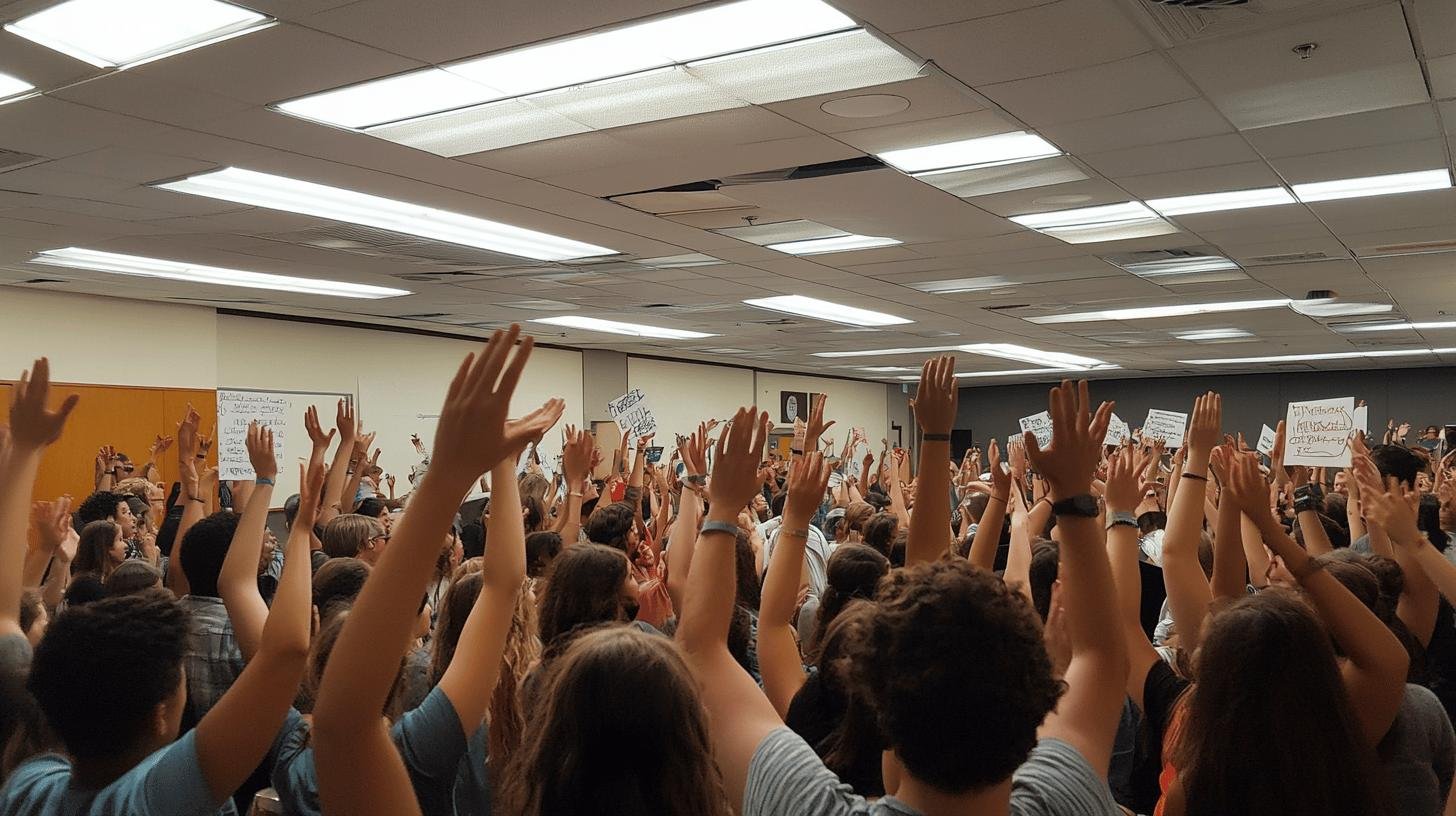TL;DR:
- Critical Race Theory (CRT) examines systemic racism in society, law, and culture.
- Key concepts: racism as ordinary, interest convergence, social construction of race, differential racialization, and voice-of-color thesis.
- Founded in the 1970s by scholars including Derrick Bell, Kimberlé Crenshaw, and Richard Delgado.
- In K-12 education, CRT highlights issues like segregated schools, funding disparities, and disproportionate disciplining of Black students.
- Critics argue CRT promotes division, negatively depicts American history, and undermines national identity; some states are attempting to ban it.
- CRT influences public policy in education, law, and social justice movements, aimed at addressing racial inequalities.
Is Critical Race Theory (CRT) just fancy talk, or does it matter? To understand CRT, we need to see how it affects the world around us. CRT looks at how race, laws, and power connect. It argues that racism isn’t just something people do; it’s built into our laws and systems.
By exploring CRT’s main ideas, we can better understand the big issues we face today. This article dives into these ideas and why they matter in our society.
Let’s discover why CRT brings up strong feelings, both for and against it.
Understanding Critical Race Theory (CRT)
Critical Race Theory (CRT) is an academic way of looking at society and culture through the lens of race, law, and power. It claims that racism is not just about personal biases; it is part of our legal systems and policies. CRT aims to show how racial unfairness is kept alive in many parts of our society. Some important ideas in CRT are:
- Racism is ordinary, not unusual: People of color often face racism as part of their daily lives.
- Interest convergence: Real change for racial minorities happens only when it also helps white people.
- Social construction of race: Race is a concept made by society, not a natural fact.
- Differential racialization: Different racial groups are seen in various ways, depending on what society needs at the time.
- Voice-of-color thesis: People of color are the best voices to share their experiences with racism.
Understanding these principles is key to seeing how deep racism runs in our society. CRT pushes us to look closely at laws and policies that keep racial unfairness going. This knowledge is crucial for anyone who wants to talk about racial justice and fairness.
Historical Background and Founders of CRT

Critical Race Theory (CRT) started in the mid-1970s as a response to Critical Legal Studies (CLS). CLS didn’t focus enough on race and justice issues. CRT aimed to take CLS’s ideas and put a spotlight on how laws keep racial unfairness alive.
- Derrick Bell: Often called the father of CRT, Bell showed that progress for racial justice often aligns with what white people want.
- Kimberlé Crenshaw: She introduced the idea of intersectionality, which looks at how different identities, like race and gender, mix together.
- Richard Delgado: He highlighted the importance of stories from minority communities in understanding racism.
CRT moved from CLS by adding a strong focus on race. While CLS critiqued laws as tools for social inequality, CRT argued that these inequalities are also racial. This change allowed CRT scholars to explore how laws harm people of color and push for a better understanding of justice and fairness.
CRT in K-12 Education
Critical Race Theory (CRT) in K-12 education examines how school policies and practices contribute to racial inequalities. Scholars focus on issues like racially segregated schools, underfunding in predominantly Black and Latino districts, and the disproportionate disciplining of Black students. CRT aims to highlight these systemic problems and advocate for changes that promote equity and justice in education.
| Issue | Explanation |
|---|---|
| Racially Segregated Schools | Historical and ongoing segregation |
| Underfunding of Majority-Black and Latino Districts | Impact of funding disparities |
| Disproportionate Disciplining of Black Students | Higher rates of suspensions and expulsions |
| Barriers to Gifted Programs | Inequitable access to advanced educational opportunities |
Controversy surrounds CRT in K-12 education. Critics argue that CRT promotes a divisive view of history and race relations. Legislative efforts to ban CRT in schools have increased, with some laws being vaguely written, leading to confusion about what content is restricted. This debate reflects a broader cultural conflict over what should be taught in schools, mirroring deep-seated disagreements about historical narratives and racial justice.
Criticisms and Controversies Surrounding CRT

Critical Race Theory (CRT) has faced significant criticism. Critics argue that CRT promotes division by emphasizing racial differences and presenting a negative view of American history. They claim that CRT portrays the country as fundamentally racist and undermines the idea of a unified national identity. Critics also say that CRT’s focus on systemic racism detracts from individual accountability and merit.
Legislative Efforts to Ban CRT
Several states have introduced legislation to ban CRT in schools. These laws are often vaguely written, making it unclear what specific content is restricted. Some bills prohibit teaching that one race is inherently superior to another or that individuals are inherently racist due to their race. The lack of clarity in these laws has led to confusion among educators, who are uncertain about what material they can include in their curricula. The legislative push to ban CRT reflects a broader effort to control educational content and maintain traditional narratives about American history.
Cultural Conflict and CRT
The debate over CRT is part of a larger cultural conflict about what should be taught in schools. This conflict goes beyond CRT to include other contentious issues like teaching American history, sex education, and climate change. Proponents of CRT argue that it is essential for understanding systemic racism and promoting racial justice. Opponents see it as an attempt to indoctrinate students with a particular ideological perspective. This cultural clash highlights deep-seated disagreements about the role of education in shaping societal values and historical understanding.
The broader impact of these controversies is significant. The debate over CRT has polarized communities and created a contentious atmosphere in schools. Teachers and administrators find themselves navigating complex legal and ethical landscapes as they strive to provide comprehensive education while adhering to legislative restrictions. The ongoing conflict over CRT underscores the challenges of addressing race and racism in educational settings and broader society.
Real-World Impact of CRT
Critical Race Theory (CRT) has significantly influenced public policy by highlighting how laws and policies perpetuate racial inequalities. Policymakers have used CRT’s framework to scrutinize and reform various aspects of the legal system, from housing policies to educational reforms. By exposing the systemic nature of racism, CRT has encouraged developing policies aimed at creating a more equitable society.
- Education: CRT has led to curriculum changes and initiatives aimed at addressing racial disparities in schools.
- Law: Legal professionals use CRT to challenge discriminatory practices and advocate for reforms in the justice system.
- Social Justice Movements: Activists leverage CRT to frame their demands for racial equity and justice.
- Criminal Justice System: CRT has been instrumental in highlighting racial biases in policing, sentencing, and incarceration.
The criminal justice system is one of the most contentious areas influenced by CRT. Critics argue that CRT’s focus on systemic racism paints law enforcement and legal institutions as inherently biased. This perspective has sparked debates about the fairness and objectivity of the criminal justice system. Proponents maintain that CRT is essential for uncovering and addressing the deep-seated racial biases that affect judicial outcomes. These ongoing controversies highlight the challenge of balancing the need for systemic reform with maintaining public trust in legal institutions.
Final Thoughts
Critical Race Theory (CRT) dives deep into America’s long-standing racial issues from a systemic viewpoint. It asks us to look beyond personal biases to see how racism is built into our laws and policies. By understanding its main principles, we can better grasp the complexity of systemic racism. The historical context and key figures in CRT shape its development today.
CRT’s impact on K-12 education highlights real problems like segregation and unequal funding. Criticism and bans on CRT show ongoing cultural conflicts. Despite these debates, CRT has made a significant mark on public policy and the criminal justice system.
Facing these controversies, CRT encourages a better understanding of racial justice.
Frequently Asked Questions (FAQ)
What is Critical Race Theory (CRT)?
CRT is an academic framework that examines society through the lens of race, law, and power, arguing that racism is built into our legal systems.
What are the main principles of CRT?
- Racism is ordinary and common.
- Interest convergence: Whites will support racial justice only when it benefits them.
- Race is socially constructed.
- Different minority groups are seen differently based on societal needs.
- The importance of storytelling from marginalized voices.
Why are these principles significant?
These principles help us see how systemic racism influences laws and social systems, offering a way to challenge and analyze these inequalities.
Who are the founders of CRT?
Key figures include:
- Derrick Bell: A pioneer of CRT.
- Kimberlé Crenshaw: Introduced intersectionality.
- Richard Delgado: Focused on critical storytelling.
How did CRT originate?
CRT began in the mid-1970s among legal scholars seeking to address race issues overlooked by Critical Legal Studies, aiming for a direct approach to racial justice.
What is CRT’s role in K-12 education?
CRT looks at how school policies create racial inequalities, focusing on issues like:
- Racially segregated schools
- Underfunding of majority-Black and Latino districts
- Unequal discipline for Black students
- Barriers to advanced programs
Why is CRT controversial in education?
Critics argue that CRT divides people and presents a dark view of history. Legislative efforts to ban it often confuse educators about what content is restricted.
What are recent legislative efforts to ban CRT?
Many states have tried to ban CRT in schools, but the laws are often vague, leaving teachers unsure about what they can teach.
How does CRT fit into broader cultural conflicts?
The CRT debate reflects larger disagreements about school content, including historical narratives and societal values.
What is the real-world impact of CRT?
CRT has shaped public policy, education, law, and social justice, raising debates about racial issues, especially in the criminal justice system.
How has CRT impacted public policy?
CRT has sparked conversations about any changes to racial justice in areas like:
- Education reforms
- Legal practices
- Social justice advocacy
- Criminal justice policies

